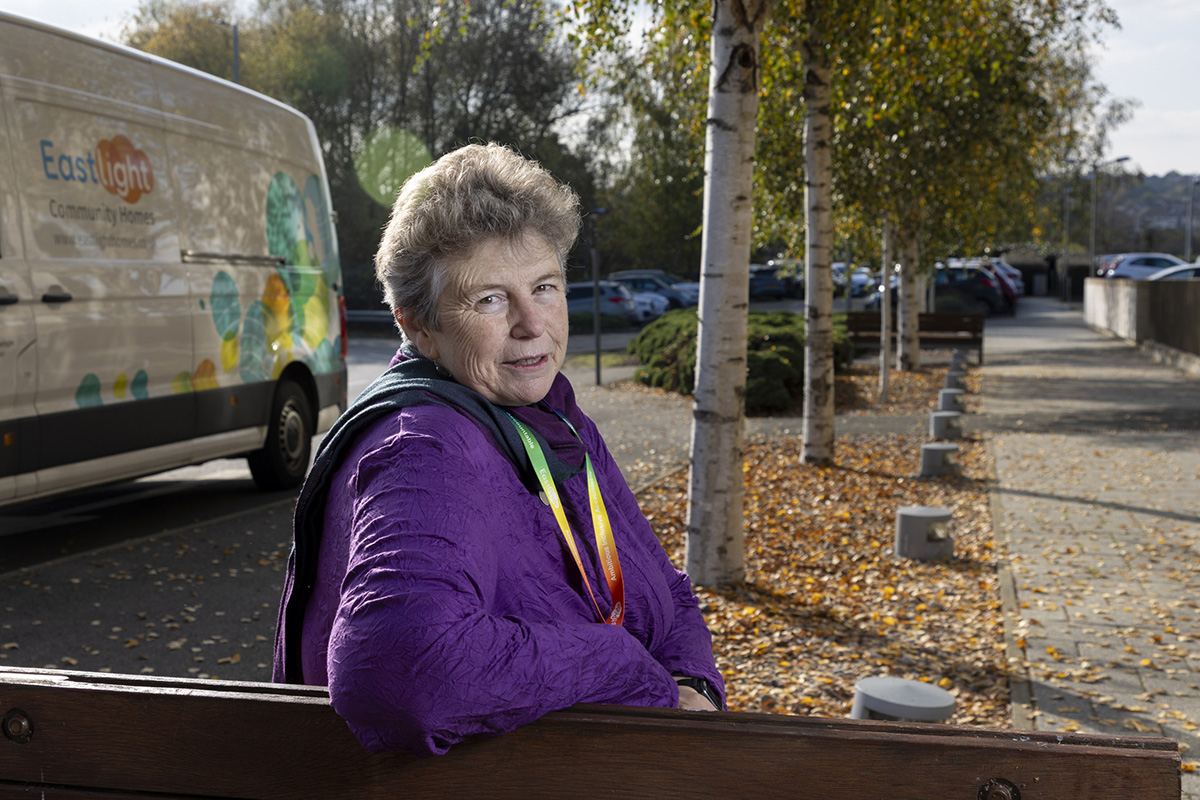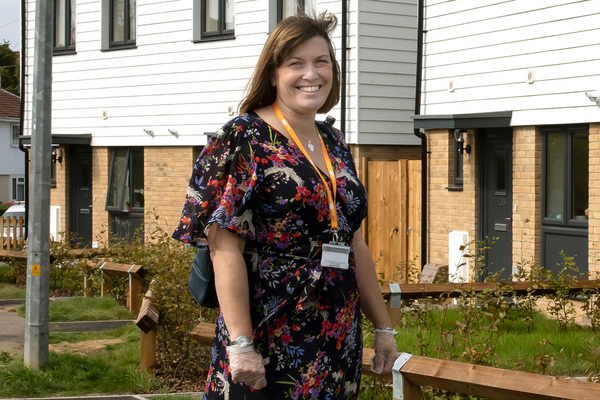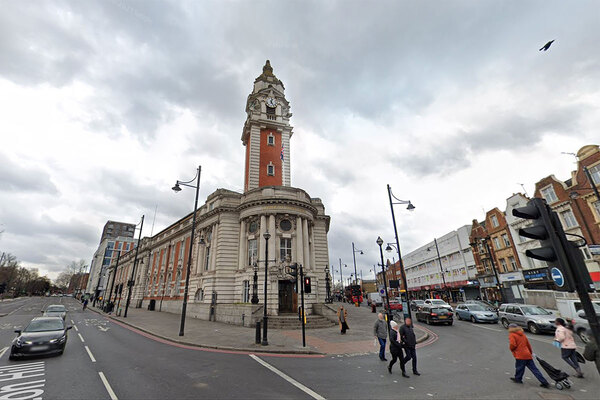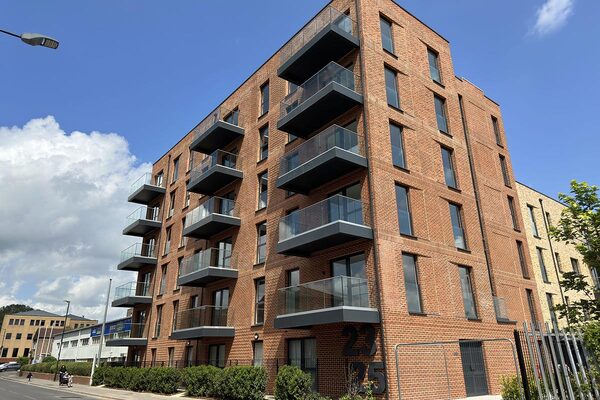You are viewing 1 of your 1 free articles
Hattie Llewelyn-Davies: ‘What would I tell government? Never underestimate the complexity of housing’
Over a remarkable career spanning more than five decades, Hattie Llewelyn-Davies has witnessed a huge shift in how homelessness and health are managed. Jenny Messenger speaks to the chair of Eastlight Community Homes as she shares her lessons from the frontline. Photography by Jonathan Goldberg
It was 1972, and Hattie Llewelyn-Davies was 18. She was expected to go to university, but decided instead to take a job at the Kingsway Day Centre, a centre for older homeless people in west London.
At the advice centre, the work was hard – making her way home at the end of her first week, she remembers falling asleep on a bench for two-and-a-half hours. This sounds like her origin story for why she spent the next five decades working in housing and health. But the seeds were probably sown even earlier, when she was a child listening to her father talk about his job as an architect and planner in the third wave of New Towns, including the first plans for Milton Keynes.
Now, Ms Llewelyn-Davies is still in housing – as chair of Essex-based Eastlight Community Homes. Inside Housing met with her to discuss her career in housing, the lessons for integrating health and housing – and her role in the creation of Eastlight back in 2020.
Resilient people
One of her strongest memories from her early career is of taking a man named Stuart to view a flat he had been offered. “He had with him a carrier bag, and he didn’t have any possessions, so I couldn’t work out why he had a carrier bag,” she says. “As we went to look around the flat, he said, ‘Can I go and do something odd?’ I said, ‘Of course you can, this is your flat you’re looking at. You can do whatever you want.’”
She watched as he took a light bulb out of the carrier bag and put it into a light fitting. “He just turned it on and off, on and off. For 15 years, he’d been living in hostels and hadn’t been able to turn his own bulb on.”
What she learned in those early weeks, she says, was that people are resilient and “incredibly brave”. “If you give them the tools, most of the time they make the best choices they can,” she says.
The job had personal consequences for Ms Llewelyn-Davies too, who gave up drinking alcohol while still a teenager. “Here was I, 18 years old, telling people who were 50, 55 to stop drinking. What right did I have to do that if I had no understanding of what it meant for me?”
Yet five decades ago, there was a dearth of good-quality support, she says, describing the services at the time as “horrible” – something she set out to change.
After starting out as a volunteer, she worked her way up through the sector and became the first chief executive of the Piccadilly Advice Centre, a drop-in service aimed at homeless young people and supported by The King’s Fund.
The Piccadilly Advice Centre was successful in bringing about reforms to the way homelessness was viewed: it secured a change in policy towards offering rights-based advice, rather than a model which provided homeless people with counselling until they were ready to find their own home. This enabled people to explore their options and find the ones that best met their needs, she says. “We then gave them the skills and information to achieve those outcomes.” She still occasionally bumps into three customers from that time.
Throughout the 1970s and 1980s, Ms Llewelyn-Davies was chair of the charity Single Homeless Project and worked with people living with HIV from around 1983, which was something “that made me really realise the links between health and housing”, she says. “[The links] are just so massive, and it’s very difficult to be interested in one and not the other.”
An important milestone in this work was the creation of the Great Chapel Street Medical Centre to provide drop-in and referral GP services to people experiencing homelessness in Westminster. “We persuaded the NHS in London to fund a specific service for homeless people. It took about four years to get them to fund it,” she says. Before the centre was established, the options for homeless people had been to go to A&E or to a day centre that employed a nurse as a one-off service.
Decades later, her groundbreaking work in revolutionising homelessness support would be rewarded with an OBE, which she accepted in 2004. She might not have taken the same decision today, she admits – “the British Empire has a different political connotation now than it did then; I would have to think harder about it” – but the award represented the progress she had made in the sector.
Towards the end of the 1980s, Ms Llewelyn-Davies moved from policy to management work. In 1988, as the Housing Act opened up the social housing sector to private finance, she became regional director of Circle 33 Housing Trust.
Hattie Llewelyn-Davies’ career
1972: Starts working at Kingsway Day Centre
1973-1986: Chair, Single Homeless Project
1979-1986: Chief executive, Piccadilly Advice Centre
1984-1986: Chair, Young Homelessness Group
1986-1988: Chief executive, Sitra Services
1988-1991: Regional director, Circle 33 Housing Trust
1992-1996: Chief executive, Shepherds Bush Housing
1998-2009: Chair, Hertfordshire Partnership University NHS Foundation Trust
2006-2012: Chair, Viridian Housing
2018-2021: Chair, PA Housing
2013-present: Chair, Buckinghamshire Healthcare NHS Trust
2017-present: Chair, Eastlight Community Homes
2018-present: Board member, NHS Providers
2021-present: Chair, Princess Alexandra Hospital NHS Trust
She has mixed feelings about that period in history. It was “really exciting”, she says, for housing associations to be able to strike out on their own without needing backing from the sector’s regulator – at that time the Housing Corporation – and local authorities. “There were some really interesting experiments around how you use mixed funding to do housing developments.”
Yet she admits that the shift in regulation ultimately had poor repercussions for affordable housing. The new policy enabled housing associations to borrow against their assets from the capital markets, combining a steadily dwindling supply of grant funding with private finance. “The reality is that our rents are much higher now than they would have been if we’d continued with capital funding [from public bodies], instead of revenue subsidy through rents,” she says. “It led to all sorts of stresses and strains, but it enabled us to build more housing.”
The decision has had serious implications for social housing as a sector, and as a brand. “Do I think that part of the solution to housing association finance is capital grant funding? Yes, because the only way we can pay for what we do is through our rents,” she says.
The alternative would be to “completely restructure the benefits and tax system in order to make it a much fairer starting point. At the minute, she says, those who are least able to bear the costs of the current system end up paying them anyway through higher rents.
After a stint as chief executive at Shepherds Bush Housing Group in the early 1990s, Ms Llewelyn-Davies began a role as chair of the Hertfordshire Partnership University NHS Foundation Trust in 1998 – the start of a new chapter in governance. She has since taken on two other chairships of NHS trusts, joining Buckinghamshire Healthcare in 2013 and the Princess Alexandra Hospital in 2021.
“I’m a serial chair for the NHS, I’m afraid,” she says.
Yet each position helps inform what she brings to her other roles. “As organisations, we need to learn to communicate better with each other, and there are lots of different ways of doing that,” she says.
Injustice and unfairness
When local bodies fail to talk to one another, injustice and unfairness can creep in. Ms Llewelyn-Davies remembers asking the surgeon carrying out her first hip replacement to get her out in 24 hours. (He countered with 36 hours and she was happy.) Yet her neighbour in the next bed, a woman around the same age, was in for two weeks because she was a social housing tenant and lived on the third floor, with no lift.
“I recovered much more quickly than her. That’s grossly unfair, and it’s only because I was an owner-occupier and in control of my own housing adaptations,” she says. “The NHS did a really good job, but the housing provider wasn’t able to replicate that service by actually giving her access to her flat.”
At Eastlight, there is also a culture of work shadowing and learning from other organisations, Ms Llewelyn-Davies tells me. As well as shadowing staff in an NHS Trust, Emma Palmer, Eastlight’s chief executive, has observed the coastguard service to learn about communicating over large distances.
Ms Llewelyn-Davies took on the role of chair in 2017, back when it was still Colne Housing, and began with the mandate to spearhead a merger. She duly did so, alongside Alison Inman, an Eastlight board member and former president of the Chartered Institute of Housing.
Unusually, 3,200-home landlord Colne issued a prospectus to housing associations that asked them what they could offer, rather than waiting to be approached by a larger landlord. It shortlisted three local organisations, eventually landing on 8,900-home Greenfields Community Housing.
“We used the expression ‘bigger, better, bolder’, which is still part of the Eastlight tagline, because we wanted to be able to play with the big guys in the Eastern region,” Ms Llewelyn-Davies says.
In July 2020, Colne joined Greenfields to create Eastlight, now a 14,500-home association. Part of Greenfields’ appeal was its commitment to resident involvement, she says. Throughout the merger, a resident scrutiny committee looked at every decision taken along the way, including making changes to Eastlight’s corporate plan.
One shift was a formal commitment to better quality heating, after residents said what mattered most to them was the cost of energy in their homes. Eastlight rewrote its business plan and doubled down on its ambition to achieve Energy Performance Certificate Band C in its homes. The landlord had to slow progress on some of its new developments as a result. “But [the residents] were right,” Ms Llewelyn-Davies says. Nevertheless, Eastlight still has its sights set on building 320 new homes a year from 2025-26.
Despite the role her father played in the initial wave of New Towns, she will be carefully scrutinising the government’s plans to establish a fresh generation of new places at speed. She cites Harlow as an example of what can go wrong. Built as part of the post-war New Towns Act 1946, Harlow has the second-highest level of deprivation and the highest level of child poverty in Essex. “Because of the period it was built, in the early 1950s, we now have crumbling infrastructure all around it,” she says. This is literally the case at the Princess Alexandra Hospital, where earlier this year, The Sunday Times reported a ceiling caving in above a patient in an intensive care unit. Although a new hospital is planned, the timeline remains uncertain.
“Housing is the cornerstone of everybody’s life – but if there isn’t infrastructure around that, it’s an incredibly difficult cornerstone to achieve,” she says.
So after five decades of experience, if she could give a piece of advice to the Labour government, what would it be? “I would be saying: don’t underestimate the complexity of housing.”
Recent longform articles by Jenny Messenger
Waqar Ahmed: the sector-disruptor who has helped L&Q grow
After more than three decades in housing, the ambitious finance director who drove some of the sector’s biggest mergers is retiring. He tells Jenny Messenger about his long list of financial firsts
Inside Housing visits one of the first landlords to win a C1 rating
Salford-based Salix Homes managed to get a top consumer rating from the English regulator despite facing significant challenges, including 20 high-rise buildings and mounting reports of repairs. Jenny Messenger visits to find out how Salix achieved its C1 grade
What is really happening with Section 106?
As developers raise the alarm about fewer social landlords buying Section 106 properties, Inside Housing’s exclusive data reveals how much affordable housing is delivered this way – and how much is in the pipeline. Jenny Messenger reports
In detail: what the NPPF changes mean for housing delivery
With the redrafted National Planning Policy Framework out for an eight-week consultation, James Riding and Jenny Messenger analyse the implications of a document that seeks to encourage large-scale housebuilding and reverse many of the previous government’s policies












